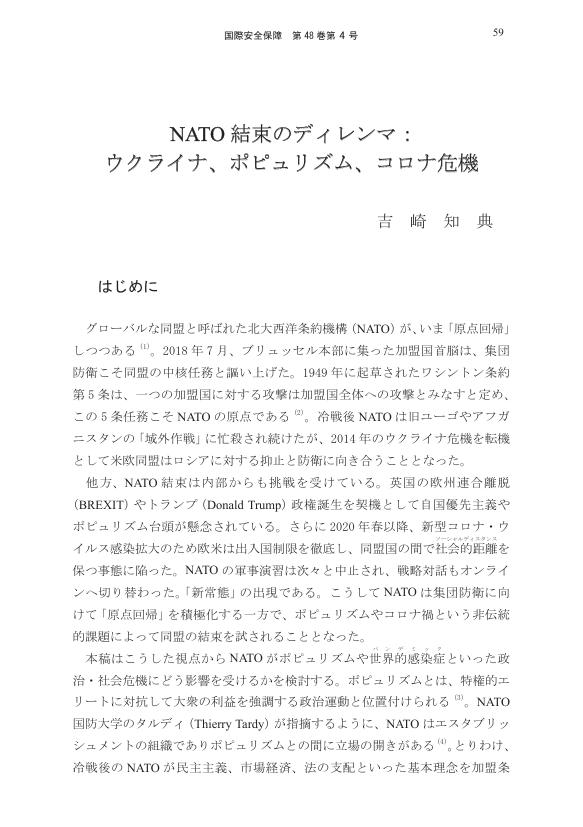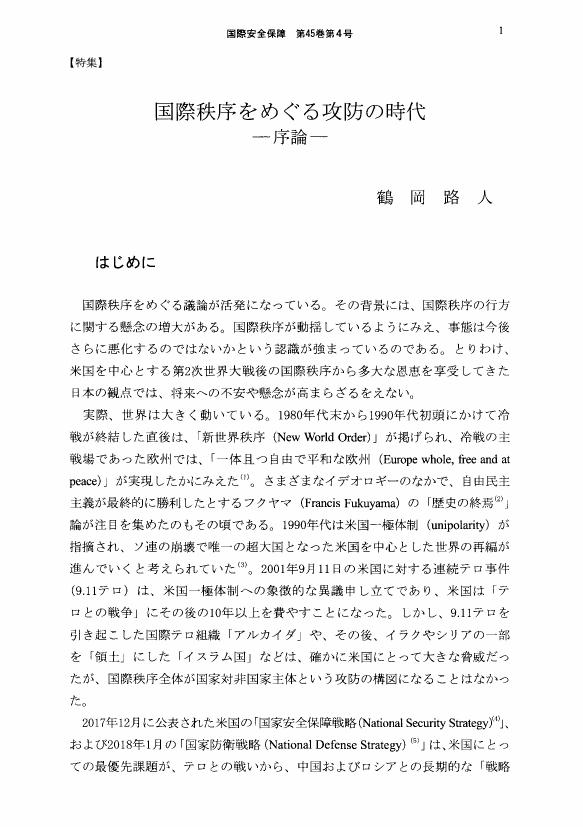- 著者
- Takahiko Aoyama Toshinori Hirai Yasuhiro Tsuji Aoi Miyamoto Toshimasa Itoh Takuya Iwamoto Yoshiaki Matsumoto
- 出版者
- The Pharmaceutical Society of Japan
- 雑誌
- Biological and Pharmaceutical Bulletin (ISSN:09186158)
- 巻号頁・発行日
- vol.45, no.1, pp.136-142, 2022-01-01 (Released:2022-01-01)
- 参考文献数
- 31
- 被引用文献数
- 1
Warfarin is a representative anticoagulant with large interindividual variability. The published kinetic-pharmacodynamic (K-PD) model allows the prediction of warfarin dose requirement in Swedish patients; however, its applicability in Japanese patients is not known. We evaluated the model’s predictive performance in Japanese patients with various backgrounds and relationships using Bayesian parameter estimation and sampling times. A single-center retrospective observational study was conducted at Tokyo Women’s Medical University, Medical Center East. The study population consisted of adult patients aged >20 years who commenced warfarin with a prothrombin time-international normalized ratio (PT-INR) from June 2015 to June 2019. The published K-PD model modified by Wright and Duffull was assessed using prediction-corrected visual predictive checks, focusing on clinical characteristics, including age, renal function, and individual prediction error. The external dataset included 232 patients who received an initial warfarin daily dose of 3.2 ± 1.28 mg with 2278 PT-INR points (median [range] follow-up period of 23 d [7–28]). Prediction-corrected visual predictive checks carried a propensity for underprediction. Additionally, age >60 years, body mass index ≤25 kg/m2, and estimated glomerular filtration rate ≤60 mL/min/1.73 m2 had a pronounced tendency to underpredict PT-INR. However, Bayesian prediction using four prior observations reduced underprediction. To improve the prediction performance of these special populations, further studies are required to construct a model to predict warfarin dose requirements in Japanese patients.
1 0 0 0 OA 序論―イノベーション・エコシステムと安全保障
- 著者
- 松村 博行
- 出版者
- 国際安全保障学会
- 雑誌
- 国際安全保障 (ISSN:13467573)
- 巻号頁・発行日
- vol.49, no.1, pp.1-17, 2021-06-30 (Released:2022-08-31)
1 0 0 0 OA イノベーション・エコシステムの拡大と投資規制 ―「安全保障」をめぐる価値対立とその変容―
- 著者
- 齊藤 孝祐
- 出版者
- 国際安全保障学会
- 雑誌
- 国際安全保障 (ISSN:13467573)
- 巻号頁・発行日
- vol.49, no.1, pp.18-34, 2021-06-30 (Released:2022-08-31)
1 0 0 0 OA NATO結束のディレンマ:ウクライナ、ポピュリズム、コロナ危機
- 著者
- 吉崎 知典
- 出版者
- 国際安全保障学会
- 雑誌
- 国際安全保障 (ISSN:13467573)
- 巻号頁・発行日
- vol.48, no.4, pp.59-75, 2021-03-31 (Released:2022-04-01)
1 0 0 0 OA 川名 晋史 著『基地の消長 1968-1973年 ――日本本土の米軍基地「撤退」政策』
- 著者
- 野添 文彬
- 出版者
- 国際安全保障学会
- 雑誌
- 国際安全保障 (ISSN:13467573)
- 巻号頁・発行日
- vol.48, no.4, pp.101-105, 2021-03-31 (Released:2022-04-01)
1 0 0 0 OA 岸 俊光 著『核武装と知識人 ――内閣調査室でつくられた非核政策』
- 著者
- 村上 友章
- 出版者
- 国際安全保障学会
- 雑誌
- 国際安全保障 (ISSN:13467573)
- 巻号頁・発行日
- vol.48, no.4, pp.106-110, 2021-03-31 (Released:2022-04-01)
1 0 0 0 OA EU離脱とイギリスの安全保障 ―「内部からの脅威」としてのポピュリズムと欧州懐疑主義―
- 著者
- 小川 浩之
- 出版者
- 国際安全保障学会
- 雑誌
- 国際安全保障 (ISSN:13467573)
- 巻号頁・発行日
- vol.48, no.4, pp.39-58, 2021-03-31 (Released:2022-04-01)
1 0 0 0 OA 浄楽寺の仏像と運慶
- 著者
- 久野 健
- 雑誌
- 美術研究 = The bijutsu kenkiu : the journal of art studies
- 巻号頁・発行日
- no.204, pp.11-28, 1960-01-25
Jōraku-ji Temple at Ashina, Zushi in Kanagawa Prefecture owns five old Buddhist statues, namely the Amida (Amitabha) Triad, Bishamon Ten (Vaisravana) and Fudō Myōō (Acala), which were registered in 1926 as Important Cultural Properties. We made researches on these statues on April 20, 1959, when we discovered, from the inside of the statue of Bishamon Ten, a tablet with inscription stating that it was carved in 1189 by Unkei and his ten assistants. The tablet, 71.5cm. in height and having a long handle in shape of a lotus stalk, has a circle and lotus petals below it drawn in black ink, with the Sanskrit monogram representing Tamon Ten inscribed within the circle. A dharani (magic formula) in Sanskrit is inscribed from its obverse surface through sides to reverse surface, and the reverse side has an inscription to the following effect : “This statue was made on March 20, 1189, at the behest of Taira-no-Yoshimori, by Unkei, the Dai Busshi (Major Sculptor) with the ecclesiastic rank of Kōtō in the Shōō-in Monastery at Kōfuku-ji, assisted by ten minor sculptors. This inscription was written by the priest Jinsai Jōkabō.” Both from the calligraphic and literary styles of the inscription, the tablet is evidently datable to somewehere around 1189. This does not necessarily mean that the tablet was prepared for the present statue. The tablets discovered from inside the statues of Bishamon Ten and Fudō Myōō in Ganjōju-in Temple in Shizuoka, with inscriptions containing the name of Unkei and dates of 1186, were approximately similar in the style of narration to that of Jōraku-ji, but at the time of their registration as National Treasures it was judged that the tablets were original but the statues were of a later period. It is hardly believable, however, that such an exceptional case, that statues are later and the tablets placed inside alone are old, should have occured two times with Unkei. Moreover, the Bishamon Ten at Jōraku-ji clearly shows the style of the Early Kamakura Period. The author believes that the tablet under discussion has always belonged to the present statue. The Amida Triad in the same temple also is inscribed on the inside with the same dharani as the one found on the tablet for the Bishamon Ten. The inscription is obviously by the same hand as the Bishamon Ten tablet. It can be asserted with considerable accuracy that the triad as well as the Fudō Myōō in Jōraku-ji were also carved by Unkei in 1189. The discovery of the tablet, thus, has added as many as five specimens to less than ten statues which have heretofore been known as genuine works of Unkei. The author furthermore suggests that the Amida, Bishamon Ten and Fudō Myōō in Ganjōju-in, from the last two of which were discovered the tablets dated 1186, can possibly be also by Unkei. He discusses also about the Eight Messengers of Fudō in the Fudō-dō Hall at Kōyasan, Wakayama, as follows. Six of the Eight Messengers are attributed in an old record to Unkei, but many scholars have been sceptial about this attribution. The author and his colleagues made X-ray examination of the statues some years ago and found that they contained discs on lotus pedestals which were similar in form to that drawn on the tablet of Bishamon Ten in Jōraku-ji. He thinks that the Eight Messengers at Kōyasan have to be re-studied. It has not been known when Unkei was conferred with the title Dai Busshi. The tablets in Jōraku-ji and Ganjōju-in prove that it was between May 3, 1186 and March 20, 1189. The Jōraku-ji tablet, especially, is an important source of information concerning the connection Unkei had with Kōfuku-ji Temple in Nara.
1 0 0 0 OA ドイツのインド太平洋戦略 ―米中対立と対中経済連携の狭間で―
- 著者
- 中村 登志哉
- 出版者
- 国際安全保障学会
- 雑誌
- 国際安全保障 (ISSN:13467573)
- 巻号頁・発行日
- vol.48, no.4, pp.1-18, 2021-03-31 (Released:2022-04-01)
1 0 0 0 OA トランプからバイデンへ ―アメリカ政治外交の変化と継続―
- 著者
- 村田 晃嗣
- 出版者
- 国際安全保障学会
- 雑誌
- 国際安全保障 (ISSN:13467573)
- 巻号頁・発行日
- vol.48, no.4, pp.19-38, 2021-03-31 (Released:2022-04-01)
1 0 0 0 OA 腎機能別に観察したリポソーマルアムホテリシンBによる低カリウム血症
- 著者
- 中蔵 伊知郎 木原 理絵 阿部 正樹 河合 実 関本 裕美 廣畑 和弘 山内 一恭 小森 勝也
- 出版者
- 一般社団法人 日本腎臓病薬物療法学会
- 雑誌
- 日本腎臓病薬物療法学会誌 (ISSN:21870411)
- 巻号頁・発行日
- vol.2, no.1, pp.11-16, 2013 (Released:2018-04-02)
- 参考文献数
- 8
liposomal amphotericin Bは、低カリウム血症の発生が問題となる。L-AMB投与による低カリウム血症の発現頻度が腎機能の程度によって異なるか否かを明らかにすることを目的とし、我々は、L-AMBによる低カリウム血症の発現頻度を腎機能別で確認したので報告する。国立病院機構大阪医療センターにおいて、L-AMBを3日以上投与された成人の入院患者46名を対象とした。今回の検討では、腎機能の程度によらず、低カリウム血症の発現が認められた。また、腎代替療法を施行されている患者においても低カリウム血症が認められた。しかし、腎機能別での発症頻度に差はなかった。このため、L-AMBを使用する際には、腎機能の程度に関係なく、早期から血清カリウム値のモニタリングをすることが望ましい。
がん化学療法に伴う副作用のうち、しびれや痛覚過敏を生じる末梢神経障害は、難治性であり、既存の鎮痛薬等をもってしても十分な効果は得られていないのが現状である。これまでに、化学療法施行時に生じる末梢神経障害の標的分子も複数報告されているものの、その有効性は基礎的検討のみにとどまり、臨床応用には至っていない。本研究は、実臨床データである大規模医療情報データベースを用い、既承認薬から新たに化学療法誘発末梢神経障害の予防薬を探索する。加えて、遺伝子発現データベース解析やモデルマウスを用いた基礎薬理学的検討から、有効性ならびに作用機序を明らかにすることで、エビデンスに基づいた予防戦略の確立を目指す。
1 0 0 0 OA 石井 由梨佳 著『越境犯罪の国際的規制』
- 著者
- 佐川 友佳子
- 出版者
- 国際安全保障学会
- 雑誌
- 国際安全保障 (ISSN:13467573)
- 巻号頁・発行日
- vol.45, no.4, pp.106-110, 2018-03-31 (Released:2022-04-01)
1 0 0 0 OA 添谷 芳秀 著『安全保障を問いなおす ――「九条―安保体制」を越えて』
- 著者
- 植木(川勝) 千可子
- 出版者
- 国際安全保障学会
- 雑誌
- 国際安全保障 (ISSN:13467573)
- 巻号頁・発行日
- vol.45, no.4, pp.111-115, 2018-03-31 (Released:2022-04-01)
- 著者
- 井上 実佳
- 出版者
- 国際安全保障学会
- 雑誌
- 国際安全保障 (ISSN:13467573)
- 巻号頁・発行日
- vol.45, no.4, pp.116-120, 2018-03-31 (Released:2022-04-01)
1 0 0 0 OA 秩序と同盟 ―アメリカの「リベラルな国際秩序」戦略―
- 著者
- 玉置 敦彦
- 出版者
- 国際安全保障学会
- 雑誌
- 国際安全保障 (ISSN:13467573)
- 巻号頁・発行日
- vol.45, no.4, pp.13-31, 2018-03-31 (Released:2022-04-01)
1 0 0 0 OA インドの核ドクトリンにおける先制核攻撃オプションの可能性
- 著者
- 栗田 真広
- 出版者
- 国際安全保障学会
- 雑誌
- 国際安全保障 (ISSN:13467573)
- 巻号頁・発行日
- vol.45, no.4, pp.86-105, 2018-03-31 (Released:2022-04-01)
1 0 0 0 OA 国際秩序をめぐる攻防の時代 ―序論―
- 著者
- 鶴岡 路人
- 出版者
- 国際安全保障学会
- 雑誌
- 国際安全保障 (ISSN:13467573)
- 巻号頁・発行日
- vol.45, no.4, pp.1-12, 2018-03-31 (Released:2022-04-01)
- 著者
- 西田 竜也
- 出版者
- 国際安全保障学会
- 雑誌
- 国際安全保障 (ISSN:13467573)
- 巻号頁・発行日
- vol.45, no.3, pp.65-69, 2017-12-31 (Released:2022-04-01)
1 0 0 0 OA 齊藤 孝祐 著『軍備の政治学 ――制約のダイナミクスと米国の政策選択』
- 著者
- 久保田 ゆかり
- 出版者
- 国際安全保障学会
- 雑誌
- 国際安全保障 (ISSN:13467573)
- 巻号頁・発行日
- vol.45, no.3, pp.55-59, 2017-12-31 (Released:2022-04-01)
















